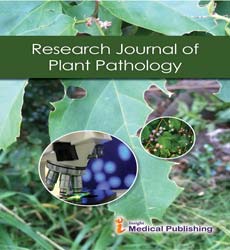Xanthomonas campestris Characteristics Based on Transcriptome Data
Nyan Laius*
Department of Proteome and Metabolome, Bielefeld University, Bielefeld, Germany
- *Corresponding Author:
- Nyan Laius
Department of Proteome and Metabolome,
Bielefeld University, Bielefeld,
Germany,
E-mail: Laius_N@gmail.com
Received date: November 14, 2023, Manuscript No. IPRJPP-23-18266; Editor assigned date: November 17, 2023, PreQC No. IPRJPP-23-18266 (PQ); Reviewed date: December 01, 2023, QC No. IPRJPP-23-18266; Revised date: December 08, 2023, Manuscript No. IPRJPP-23-18266 (R); Published date: December 15, 2023, DOI: 10.36648/iprjpp.6.4.182
Citation: Laius N (2023) Xanthomonas campestris Characteristics based on Transcriptome Data. J Res Plant Pathol Vol.6 No.4: 182.
Description
As an application model, worldwide changes of quality articulation were observed during development of X. campestris pv. campestris B100 on two different carbon sources. In contrast to growth in minimal medium supplemented with 1% glucose, exponentially growing bacterial cultures were incubated either for a single hour or permanently. Six qualities were distinguished that were altogether expanded in quality articulation under both development conditions. These qualities were situated in three recognized chromosomal areas in operon-like quality bunches. Qualities from these groups encode discharged glycosidases, which were anticipated to be explicit for galactose-containing starches, as well as transport proteins likely situated in the external and internal cell film. At last qualities from one group code for cytoplasmic compounds of a metabolic pathway explicit for the breakdown of galactose to intermediates of glycolysis.
T3S Effectors
Xanthomonas campestris pathovar vesicatoria is a Gramnegative bacterium that causes bacterial spot illness in tomato and pepper. Xcv, like other bacterial pathogens of plants and animals, promotes bacterial growth and pathogenesis by suppressing host defense signal transduction through the Type 3 Secretion (T3S) system. The Xcv T3S contraption secretes and moves ~35 protein substrates (alluded by and large as T3S effectors) into have cells. Xanthomonas T3S effectors are called 'Xops' or Xanthomonas external proteins in view of customary terminology. Explaining T3S effector capability is a test in light of the fact that their essential grouping imparts restricted succession likeness to very much described proteins. Thus, structural prediction programs and/or solving effector structures have provided the majority of insight into T3S effector function. The arising subject is that T3S effectors encode compounds or framework proteins that copy the capability of eukaryotic proteins to stifle various hubs in natural resistance signal transduction. Xanthomonas campestris produces this high highatomic weight heteropolysaccharide, which is polyanionic with the nature of bio adhesion. It is broadly utilized as a drug excipient in light of its nontoxic and nonirritating nature. This transporter is comprised of thiolated l-cysteine atom and tannin is delivered by them in the buccal mucosa. This thiolation improves adhering to the buccal mucosa contrasted and free thickener and thickener thiolate with more take-up of spit while tannic corrosive promotion string and dry the oral mucosa.
Restorative Plants
The Gram-negative Xanthomonaceae are plant-related and as a rule plant-pathogenic microorganisms. A portion of these γ- proteobacteria are risks for significant harvests like rice or citrus plants. Simultaneously microbes of this pathovar are makers of the exopolysaccharide thickener, which is applied as a viscosifier at large scale in enterprises connected with food and drugs creation and in the oil boring industry. Genome information are accessible for the X. campestris pv. campestris strains, whose pathogenicity to plants was the primary focus of the investigation. As of late, the genome of X. campestris pv. campestris B100 was finished, a strain which had been described especially in regards to xanthan creation and starch digestion. As a result, functional post-genome analysis has a solid foundation. Obtaining and usage of starches are integral for both, plant pathogenicity and xanthan creation. Upon passage into the cytoplasm imported sugars can be utilized or utilized as carbon hotspot for the creation of cell surface saccharides including thickener. Then again, throughout its pathogenic cooperation with have plants X. campestris pv. campestris is accepted to debase polysaccharide polymers that make up the majority of plant cell wall components, yet that are additionally appended to establish cell surface glycoproteins like arabinogalactan proteins. Obtaining and usage of starches are integral for both, plant pathogenicity and xanthan creation. Upon passage into the cytoplasm imported sugars can be utilized or utilized as carbon hotspot for the creation of cell surface saccharides including thickener.
Open Access Journals
- Aquaculture & Veterinary Science
- Chemistry & Chemical Sciences
- Clinical Sciences
- Engineering
- General Science
- Genetics & Molecular Biology
- Health Care & Nursing
- Immunology & Microbiology
- Materials Science
- Mathematics & Physics
- Medical Sciences
- Neurology & Psychiatry
- Oncology & Cancer Science
- Pharmaceutical Sciences
